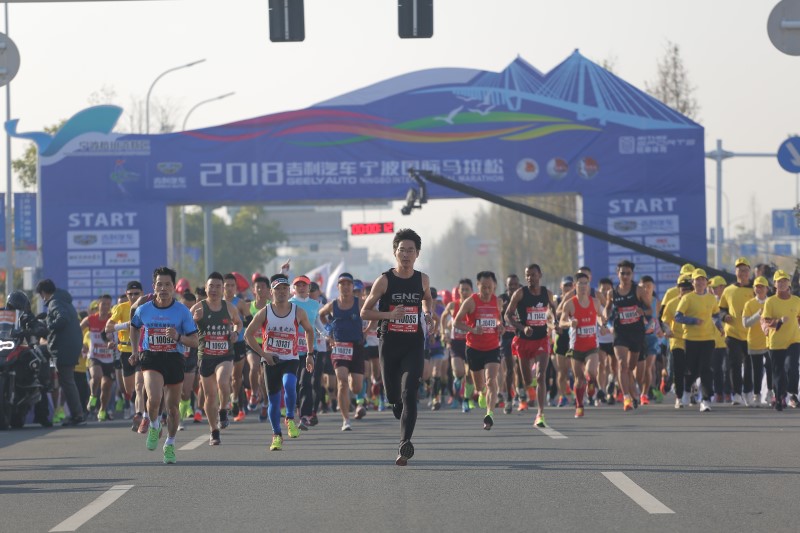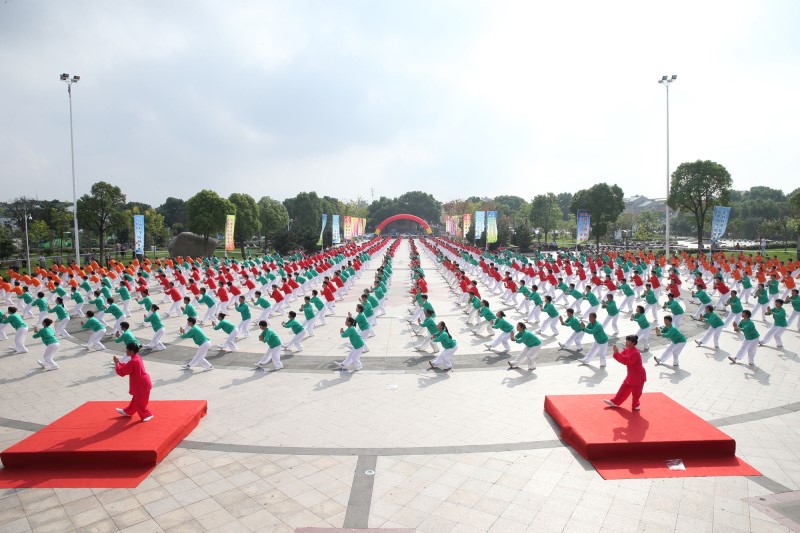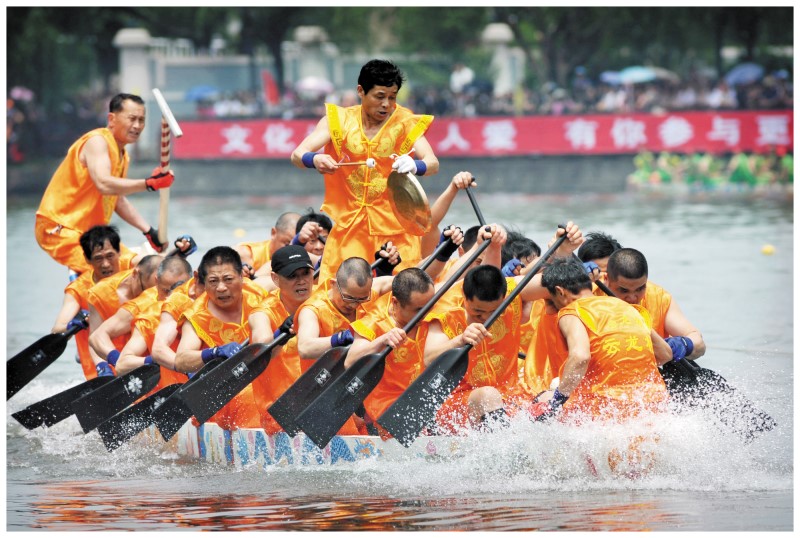


It is believed that a country will enter a so-called marathon phenomenon after per capita GDP exceeds $5,000. In China, that time came in 2011, when the nation’s marathon fever began to burn amid economic and social prosperity brought by reform and opening-up.
However, the nation’s sports industry did not begin to prosper only in the 2000s. In fact, like other civilizations, sports has long tradition in the nation’s history. Since the founding of the People’s Republic of China in 1949, the central government has set multiple guidelines to encourage public sports activities. Since reform and opening-up specifically, the central government has renewed and strengthened the call to develop the country’s sports industry.

The city of Ningbo in East China’s Zhejiang province, specifically, is one Chinese city with a long history of sports. Starting in 1983, Ningbo, then a county, launched the first-ever New Year running event in accordance with the call for a healthier society.
Some 36 years later, the New Year running tradition can be seen in many cities across China. Tens of thousands of people signed up to participate in running activities of different distances during the New Year holiday in multiple cities and via several online running apps to welcome the New Year.
“Marathon is one of the best achievements in the 40 years of China’s sports reform and opening-up,” commented Shui Tao, deputy secretary-general of China Athletics Association (CAA).
Only 79 Chinese cities hosted marathons in 2015, but that figure quickly expanded to 133 in 2016 and then to 234 in 2017. By the end of 2018, over 70 percent of China’s prefecture-level cities had hosted at least one marathon event, according to CAA.

Beyond running, which requires little in terms of facilities, Chinese authorities also responded to the demand for enhanced supportive exercise facilities and sports venues. By the end of 2017, the number of sports venues nationwide exceeded 1.957 million and the per capita sports area reached 1.66 square meters.
In 2015, China made “fitness for all” a national strategy, pledging to increase the number of people exercising to 500 million and the per capita sports area to two square meters by 2025. The goal also includes building a 15-minute workout circle in cities, thus providing a workout facility for urban residents within 15 minutes’ reach.
In Ningbo, where there is a long tradition of promoting fitness for all, the per capita sports area already tops 2.2 square meters and the city now plans to provide a sports venue or fitness facility within 10 minutes’ reach for all urban residents so as to encourage more vitality for the city dwellers.
“The dream to become a sports power is in perfect harmony with the realization of China Dream, one that is to be implemented within the blueprint of the Two Centenaries, through sports reforms based on fresh ideas and on coordination between competitive and mass sports,” Chinese President Xi Jinping noted in a remark to individuals and groups advancing China’s sporting cause in 2017.

 Award-winning photos show poverty reduction achievements in NE China's Jilin province
Award-winning photos show poverty reduction achievements in NE China's Jilin province People dance to greet advent of New Year in Ameiqituo Town, Guizhou
People dance to greet advent of New Year in Ameiqituo Town, Guizhou Fire brigade in Shanghai holds group wedding
Fire brigade in Shanghai holds group wedding Tourists enjoy ice sculptures in Datan Town, north China
Tourists enjoy ice sculptures in Datan Town, north China Sunset scenery of Dayan Pagoda in Xi'an
Sunset scenery of Dayan Pagoda in Xi'an Tourists have fun at scenic spot in Nanlong Town, NW China
Tourists have fun at scenic spot in Nanlong Town, NW China Harbin attracts tourists by making best use of ice in winter
Harbin attracts tourists by making best use of ice in winter In pics: FIS Alpine Ski Women's World Cup Slalom
In pics: FIS Alpine Ski Women's World Cup Slalom Black-necked cranes rest at reservoir in Lhunzhub County, Lhasa
Black-necked cranes rest at reservoir in Lhunzhub County, Lhasa China's FAST telescope will be available to foreign scientists in April
China's FAST telescope will be available to foreign scientists in April